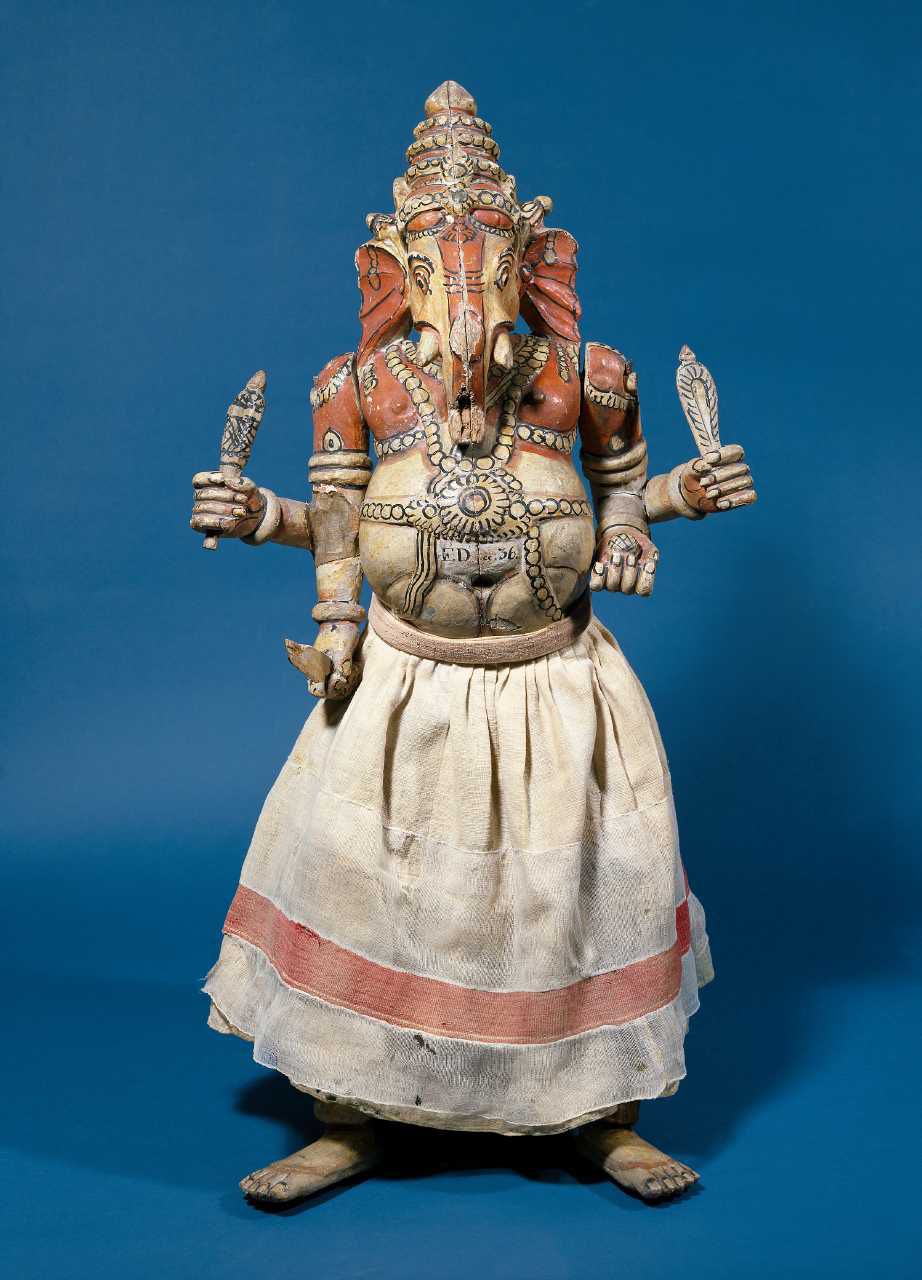
Small wooden sculpture of lord Ganesha, entered in the Royal Danish Kunstkammer in 1780 (Inv.no. Da.36)
The Royal Danish Kunstkammer founded c. 1650 by King Frederik III contained a number of artefacts from Tranquebar and other parts of India, several of them probably gifts to Danish Kings from the Thanjavur kings over the years from 1620-1845, the Danish era in Tranquebar. Today, a number of Indian artefacts from the Kunstkammer are kept in the National Museum of Denmark. Other artefacts were brought back to Europe and bought by both noblemen and citizens.
During India’s colonial period, Tranquebar functioned as a Danish trade station from 1620-1845. The place has a rich intercultural history, documented in historical buildings and rich archival sources as well as old and new ethnographic collections of material items, photos and accounts of everyday life. Tranquebar – or Tharangampadi – is a village on the Coromandel Coast of south India. A large part of the population in Tranquebar are fishers or working within business related to fishing. The language is Tamil and the majority of the inhabitants adhere to religious traditions of Hinduism, but there are also smaller communities relating to Christianity or Islam.